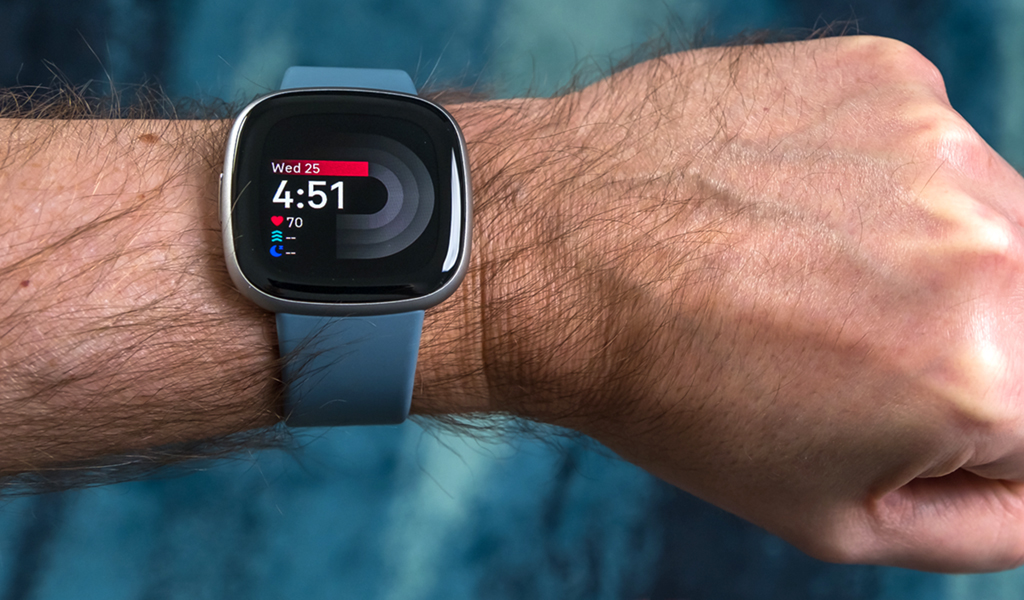
A smartwatch’s purpose is to both induce informed activity and keep you connected, but the Fitbit Versa 4 forces you to make lasting choices. This watch is a successor to the Versa 3, except the two actually differ a fair bit when you break things down, which I’ll explain as I go along.
Fitbit is undergoing change now that it’s firmly under Google’s banner (it completed its acquisition of Fitbit in 2021). Previously, as an independent brand, Fitbit charted a course of wider integration and broader features to expand on what its devices could do. That’s no longer the case, now that the focus appears to be narrowing toward health and activity tracking.
The Versa 4 in a nutshell
I don’t want to get into the weeds on the design because the Versa 4 is almost an exact clone of the Sense 2. It is lighter than the Versa 3, and has the newer physical button on the side, but otherwise looks very similar. Where it differs from the Sense 2 is in the available sensors, meaning the Versa 4 doesn’t have the ECG (electrocardiogram), EDA (electrodermal) or Body Response stress sensor. That makes it less of a health-focused watch than the Sense 2 clearly is.
Instead, the Versa 4 is more about staying on top of workouts and active lifestyles, though not without some health metrics thrown in for good measure. For instance, you can still track heart rate, blood oxygen (SpO2), menstrual cycles and sleep quality. There is the same built-in GPS and 5ATM protection for tracking distance and routes outdoors, as well as when you want to take the watch with you for a swim.

The similarities don’t stop there. The Versa 4 shares the same strap mechanism the Sense 2 has, which is a carryover from their respective predecessors. If you’ve got straps from those, you can use them here without issue.
Much of this has to do with the Google Pixel Watch because Fitbit OS looks so much like Wear OS. It’s not, though, meaning the two haven’t merged (yet), but as I noted in my Sense 2 review, the visual style is obvious. Thing is, to streamline it all, it meant Fitbit had to cut third-party app support, which effectively also meant the end of key features. For instance, you can’t stream music directly from the watch anymore. The Spotify integration that worked so well is no longer there.
Software and setup
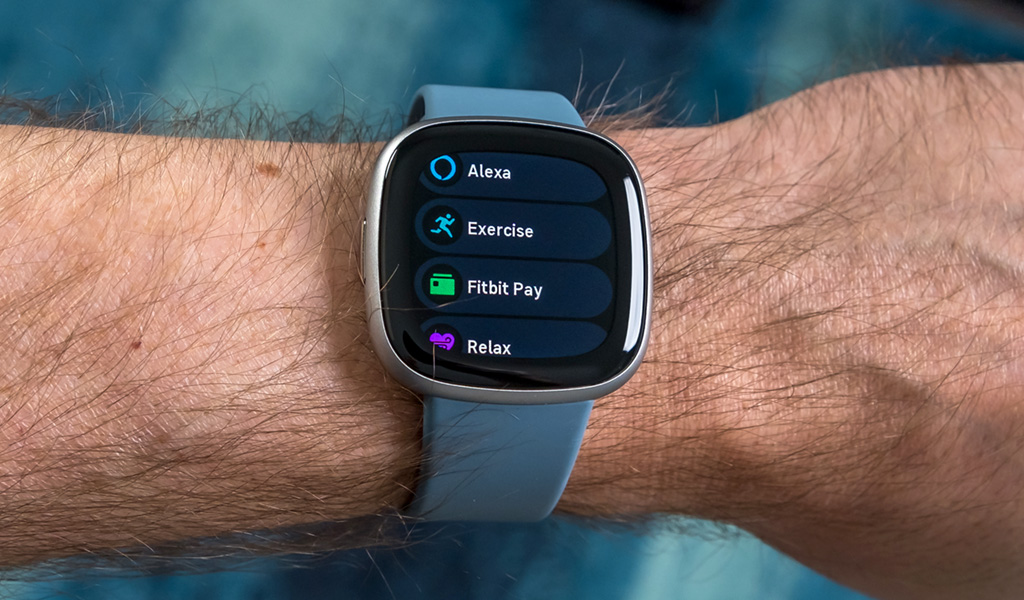
If this seems or appears confusing, you’re not alone, as it’s not clear what Fitbit and Google have in mind. As is, Google Assistant isn’t available on the watch, whereas Amazon Alexa is. Google Wallet works, so you can pay for stuff by tapping the watch, which is nice, only that you can’t integrate other apps or loyalty cards the way you used to. The Starbucks app was known for that, and I always had a barcode app that integrated my loyalty cards for easier scanning.
With all that in mind, it’s not hard to set up the Versa 4, but you do lose out on certain features if you’re upgrading from a previous Versa. Case in point, the watch’s Wi-Fi connection is dormant, leaving you to update the firmware via Bluetooth, which takes much longer. I will also point out that Fitbit announced the Versa 3 is also losing some of the same features, namely music and third-party apps.
This puts all the onus on the activity and health tracking features. Since there are fewer sensors with this watch, the Versa 4 is up and running in minutes once you pair it with your phone and use the Fitbit app to get started. Rather than app icons, you press the physical button to go to the main home screen, and then press it again to see the list of available apps. Double-click it to shortcut to Alexa, Google Wallet, notifications and settings. Press and hold it to access an assigned feature of your own choosing. Swipe left or right on the screen to cycle through the tiles, down for quick settings and up for notifications.
Tracking exercise with the Versa 4
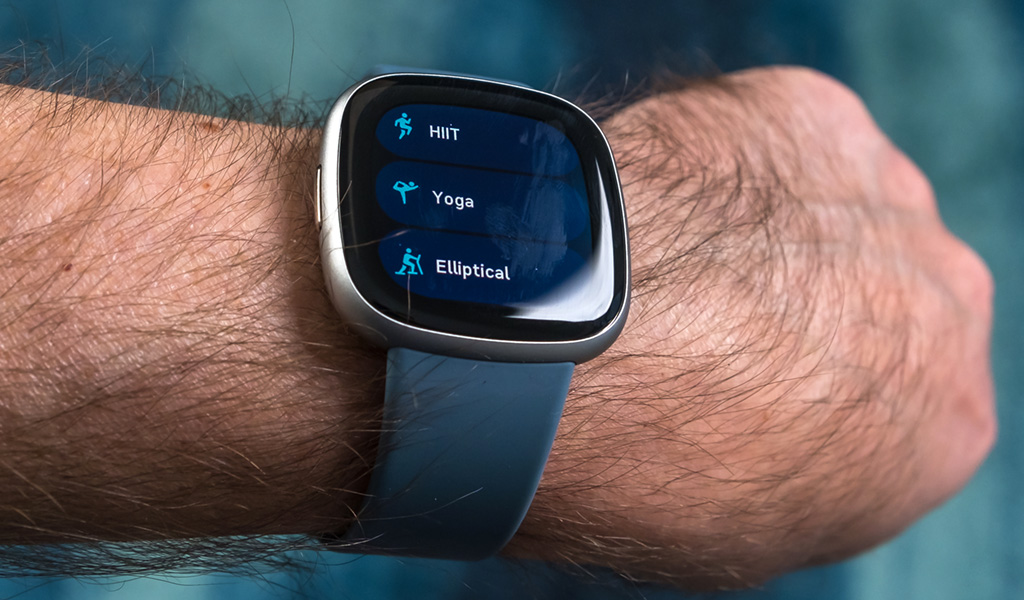
As an exercise tracker, the Versa 4 offers the same 40+ workouts the Sense 2 does. Not to mention the Pixel Watch, which has the exact same ones. It automatically tracks certain ones, like running, walking, hiking and cycling after you’ve been doing them for 10 minutes. That’s great for those times you forget to kick it off, but it won’t do that for all the other exercises, so you need to be vigilant in remembering to manually do it yourself each time.
I saw no real difference between this watch and the Sense 2 as far as activity tracking was concerned. The same sensors track for the same exercises, and results tend to look the same too. What’s odd is the heart rate monitor seems to act conservatively, routinely showing lower beats per minute than I was feeling. To check this, I put the Pixel Watch back on and found there was a 12 bpm discrepancy. It may not be big on paper, but in reality, it makes a real difference for performative reasons.
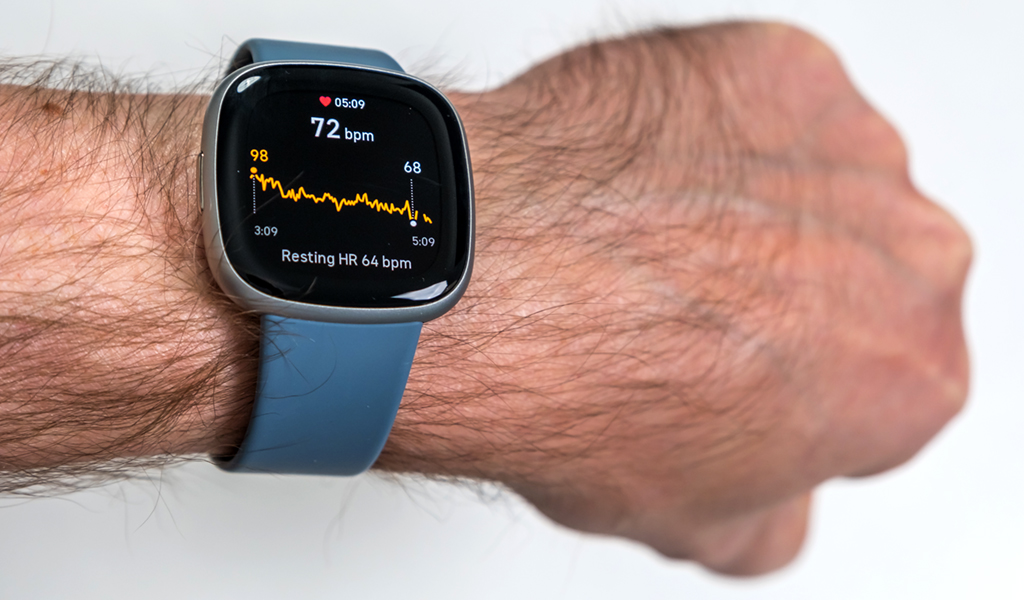
For instance, not only does it affect calorie burn metrics, but Fitbit’s own Active Zone Minutes rely on that data to give you a score. That score then impacts the Daily Readiness Score. It’s a cascading effect that Fitbit could and should fix to ensure accuracy. All it takes is a firmware update.
GPS also tends to go astray when tracking routes like the Sense 2 did. This won’t happen across the entire route, but it can happen in situations where you have congestion, be it a forested area or tall buildings in a city. While those conditions can mess with any GPS signal, other smartwatches are more consistent, like those from Garmin. Another firmware update could take a stab at fixing this too.
Sleep and health data
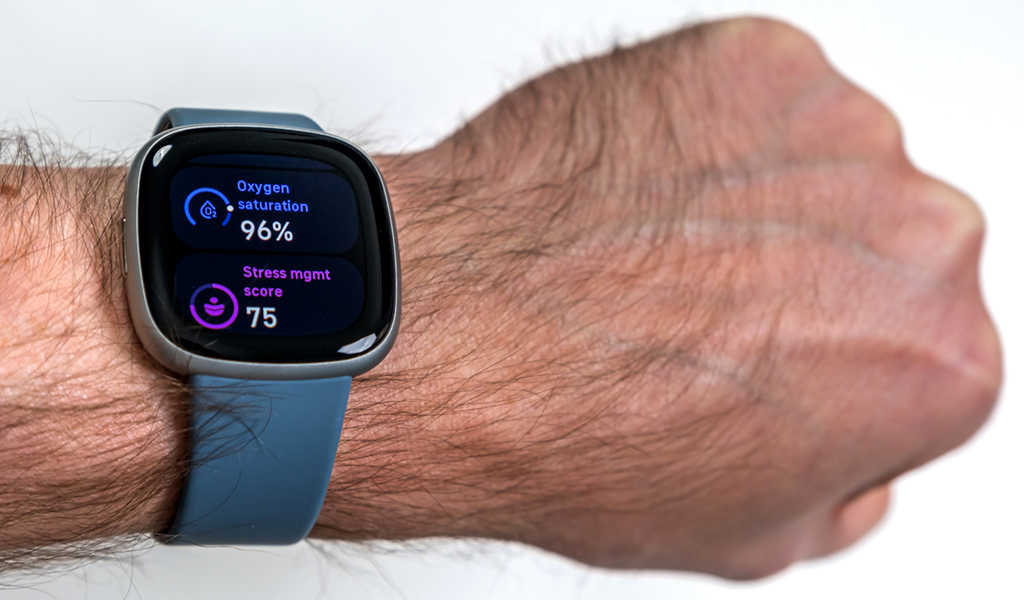
Like the Sense 2, the Versa 4 needs you to sleep with it for 14 nights within a calendar month to give you a sleep profile. I found little to differentiate the sleep tracking between the two watches, so if you care about sleep quality, you will get results you can trust here. But to get every feature, you will need to subscribe to Fitbit Premium. There is no snore or noise detection—also missing in the Sense 2—despite an onboard microphone.
With a dearth of health-related sensors, the Versa 4 caters more to exercise and daily activity than it does to a snapshot of your health data. In that regard, the watch is actually closer to something like the Fitbit Charge 5 than it is the Sense 2. Without an ECG or PPG (photoplethysmography) algorithm, there’s no way to know if your heart is doing something weird while you sleep. The only clue might be an unusually high resting heart rate.
While you sleep, you will also get blood oxygen levels via the SpO2 sensor. There are watch faces you can choose from that will show you the percentage at all times. You want to be at 95% or above.
Swipe through the tiles on the watch to look at daily stats, like in Today’s Activity where it shows steps, calories, distance, heart rate and others. The Fitbit app will show you more, like the Stress Management score and Readiness. You’ll also see skin temperature data appear from your baseline while you sleep, which is visible in the app but not from the tile on the watch. It’s not as intricate or precise as the Sense 2, however.
Notifications and Alexa
The notification system, especially with an Android phone, is quite good. You can choose which apps send notifications to the Versa 4. You can’t do much with them, but at least you can see whether it’s something urgent to deal with on your phone. Android phones will let you respond to messages by voice, as well as pick up phone calls and speak directly to the watch. These features don’t apply when paired with an iPhone.
Alexa is the only voice assistant available, given Google Assistant’s absence. It’s easy to set up, and works quite well, letting you control smart home devices and ask it questions on the fly.
Fitbit Premium
Premium provides deeper integration and additional features, but in the Versa 4’s case, it’s the content that stands out. With all the workouts, practices and recipes available, a more workout-focused smartwatch works that way. It costs $13/month or $105 for the year, but you do get the first six months free, so best to get the most out of it and see if it’s worth going on.
Fitbit Versa 4 battery life

This is easily one of the best features in the Versa 4. Fitbit says the battery can last up to a week, and it comes close. Best to leave the always-on display off to stretch it out. If you leave GPS on for workouts, you could get away with five days, which is amazing by smartwatch standards. It recharges pretty quickly so you don’t lose much time when laying it on the magnetic charger.
Final thoughts
It’s hard for me to tell you if the Versa 4 is worth it because it’s not entirely clear what Fitbit will or won’t do with it. Firmware updates could fix the accuracy issues, but it’s unknown whether newer or missing features will also come back. We know Google Maps will eventually come in, increasing Google’s overall presence. Third-party apps, on the other hand, look very unlikely to integrate the way they used to.
I recommended the Versa 4 over the Sense 2 if you were focusing more on exercise and fitness over health metrics. The two watches share the same functionality in tracking activity, so if you get the Sense 2, you get the Versa 4 plus the other features. You could also consider other smartwatch options if you’re an Android user, like the Pixel Watch or Galaxy Watch5, for instance.
The Fitbit Versa 4 is available now in black, pink sand and waterfall blue.


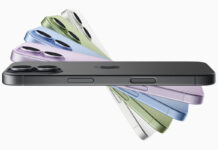
I love Fitbit and have used them for years including a couple of Versas but I’ll be honest and say I dont know if I’d buy a Versa again. Other Fitbits yes, but I feel the line may be coming to an end and it’s replacement will be more Google Watch than Fitbit wearable. They do have great battery life though, that’s why I keep going back to Fitbit.
Comments are closed.